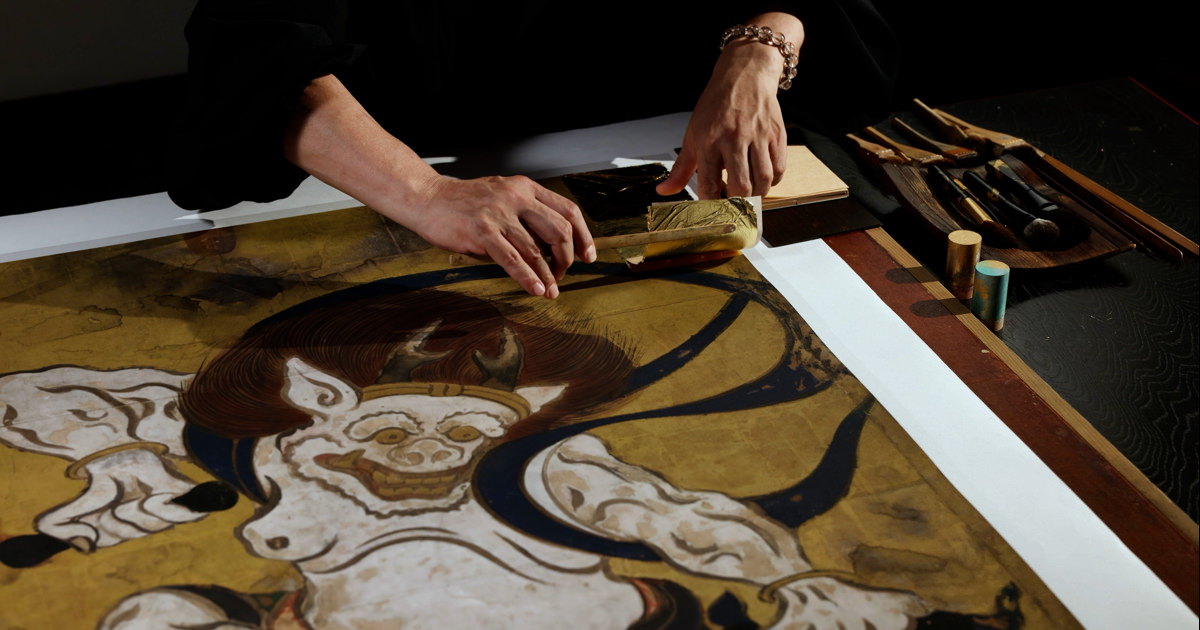Tatars playing polo and hunting, attributed to Kano Soshu (Japanese, 1551–1601). Ink, colors and gold on paper. Asian Art Museum of San Francisco, Museum purchase, B69D18.a-.b. Photograph © Asian Art Museum of San Francisco.
These images are based on the high resolution facsimile produced by the Tsuzuri Project. Unauthorized copying, duplication, or transfer of these images is strictly prohibited.
Tatars Playing Polo and Hunting
High-resolution facsimiles
- Material
- printed, gold on washi paper
- Period of creation
- Tsuzuri Project Stage 10 2016–2017
- Recipient
- Kyoto National Museum
Original
- Artist
- Attributed to Kano Soshu
- Historical era
- Momoyama (16th century)
- Material
- ink, color, and gold on washi paper
- Medium
- a pair of six-fold screens
- Size
- Each screen H166.4 × W348.0 cm
- Collection
- San Francisco Asian Art Museum of San Francisco
Description
Kano Soshu is the second son of Kano Shoei and the younger brother of Kano Eitoku who was one of the most influential painters in the Momoyama period.
Not many artworks exist, but his actual paintings and related materials show that he carried on the bold style of Eitoku and was active as his right-hand.
The Tartars refer to the nomadic tribes living in northeastern Mongolia. In this painting, Soshu vigorously depicted the Tartars‘ favorite pastimes: a hunt in the left screen and a polo game in the right screen. This type of exotic paintings was widely accepted among the Samurai class and became the popular subject which the Kano School painters were good at from the Momoyama to the beginning of the Edo period. Above all, this artwork is widely known as the masterpiece in particular.




